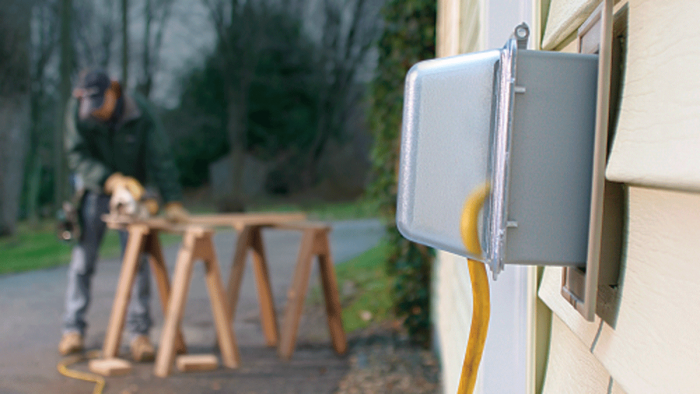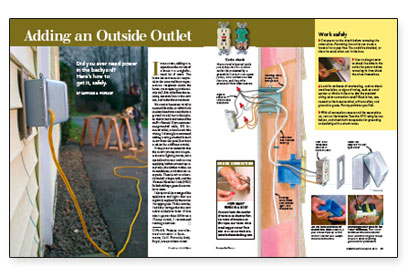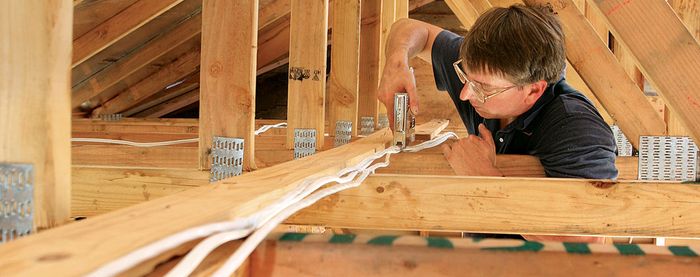Adding an Outside Outlet
Did you ever need power in the backyard? Here's how to get it.

Synopsis: An electrical contractor explains how to tap into an existing circuit in order to add an outdoor outlet protected by a ground-fault circuit interrupter. A large drawing illustrates the wiring, and a sidebar offers safety tips.
In most cases, adding a receptacle on the outside of a house is a straightforward bit of work. You locate the new exterior receptacle in the same stud bay as a general-use receptacle inside the house, cut an opening in the outside wall, fish cable from the existing electrical box to the new one, and make the connections.
Most newer houses are wired in nonmetallic cable, in which both insulated conductors and the bareground wire all run inside a plastic sheath (one brand name of the stuff is Romex). If you encounter nongrounded cable, BX (armored cable), or knob-and-tube wiring, I’d strongly recommend adding a new, grounded branch circuit from the panel (but that’s a subject for a different article).
It’s important to remember that the circuit you tap into is a general-use or lighting circuit, not a specialized circuit such as one supplying kitchen-countertop receptacles, the clothes washer, an air conditioner, or a bathroom receptacle. These circuits are heavily loaded to begin with, and the National Electrical Code (NEC) forbids adding a general-use outlet to them.
I always total the wattage of the appliances and lights that are regularly supplied by the circuit I’m tapping into. To this number, I add the wattage that the new outlet is likely to draw. If that sum is greater than 1440w on a 15-amp circuit, I recommend running a new one.
Work safely
Cut power to the circuit before removing the cover plate. Removing the outlet can cause a loose wire to pop free. You could be shocked, or the wire could short out in the box.
Use a voltage tester to check the slots in the outlet for power before removing it; then check the wires themselves.
Look for evidence of overheating, such as discolored insulation, or signs of arcing, such as metal spatter or divots in the wire. Are the standard wiring color conventions used? Black is hot, connected to the brass terminal, white to silver, and ground to green. Fix any problems you find.
With all connections secure and the cover plate on, turn on the breaker. Test the GFCI using its test button, and check both receptacles for grounding and polarity with a circuit tester.
 From Fine Homebuilding #161
From Fine Homebuilding #161
For more photos, drawings, and details, click the View PDF button below.





